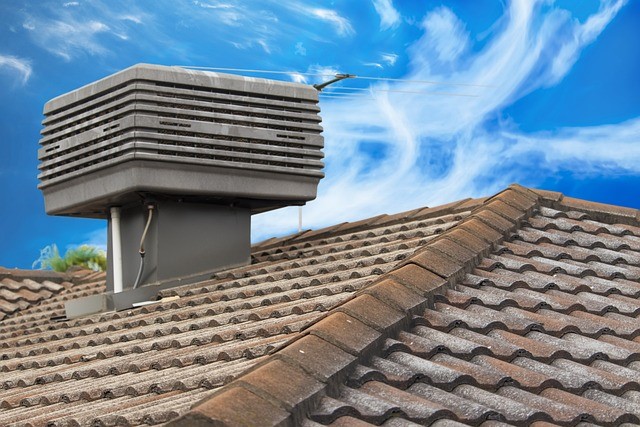A properly functioning air conditioning (AC) system is necessary for comfort and well-being. However, merely having an AC unit is not enough.
In this quick guide, we dive into the details of checking if your AC is cooling properly, covering various aspects from airflow and temperature differentials to potential issues and DIY troubleshooting.
Understanding the Basics: Airflow and Temperature
Ensuring your AC system’s airflow and temperature are optimized is fundamental to its cooling efficiency. Certain elements are critical in doing so.
Assessing Airflow
Begin by evaluating the airflow from your AC vents. Place your hand in front of a vent and feel the air. It should be strong and consistent. Weak or uneven airflow might indicate issues with the blower motor, air filters, or ductwork.
Measuring Temperature Differentials
Use a thermometer to measure the temperature of the air entering the return air vent and compare it with the air exiting a supply vent. The ideal temperature differential is typically between 14-20 degrees Fahrenheit. A lower differential may suggest refrigerant issues.
Potential Issues and DIY Troubleshooting
Identifying and addressing potential issues through DIY troubleshooting is crucial for maintaining your AC’s optimal performance. Here are some common problems and solutions to consider.
Checking the Thermostat Settings
Ensure the thermostat is set to the desired temperature and the cooling mode is engaged. Incorrect thermostat settings are a common oversight leading to perceived cooling issues.
Inspecting the Air Filters
Dirty or clogged air filters restrict airflow, diminishing the AC’s cooling efficiency. Regularly check and replace filters, aiming for a clean filter every 1-3 months.
Examining the Condenser Unit
Inspect the outdoor condenser unit for debris such as leaves, dirt, or obstructions. A clear and unobstructed condenser allows optimal heat exchange, improving overall cooling performance.
Verifying Refrigerant Levels
Low refrigerant levels can hinder the AC’s cooling capacity. While refrigerant issues often require professional intervention, ensuring proper levels is essential for optimal performance.
Cleaning the Evaporator Coils
Over time, evaporator coils can accumulate dirt, reducing their ability to absorb heat. Cleaning the coils with a soft brush or compressed air can enhance cooling efficiency.
Checking for Leaks
Inspect the AC unit and refrigerant lines for any visible signs of leaks. Leaks can lead to a refrigerant imbalance, affecting the cooling process.
Examining Ductwork for Leaks
Leaky ducts contribute to cooled air escaping before reaching living spaces. Seal any visible leaks with duct tape or consider professional duct sealing.
Verifying the Fan Functionality
The indoor fan plays a crucial role in distributing cooled air. For proper AC cooling, ensure the fan is operating smoothly, and consider lubricating the fan motor if necessary.
When to Seek Professional Assistance
Knowing when to seek professional assistance is vital for addressing complex issues beyond DIY troubleshooting.
Inadequate Cooling Despite DIY Efforts
If the AC continues to underperform despite your troubleshooting efforts, it’s advisable to seek professional HVAC assistance. Persistent issues may indicate complex technical problems.
Unusual Sounds or Odors
Unusual noises or odors emanating from the AC unit could indicate mechanical or electrical issues. A prompt, professional assessment is crucial to prevent further damage.
Regular Maintenance for Long-Term Efficiency
Regular maintenance practices are key to ensuring your AC system’s long-term efficiency.
Proactive maintenance by HVAC professionals is essential for the long-term efficiency of your AC system. Regular inspections, cleaning, and adjustments can prevent issues before they escalate.
Optimizing AC Performance Through Smart Practices
Smart Thermostat Integration
Consider upgrading to a smart thermostat that allows precise temperature control and scheduling. Smart thermostats adapt to your preferences, optimizing energy usage and overall cooling performance.
Utilizing Ceiling Fans Effectively
Ceiling fans can complement your AC by circulating air and enhancing cooling efficiency.
Closing Curtains and Blinds
During the hottest parts of the day, close curtains and blinds to block out sunlight. This minimizes heat gain, reducing the workload on your AC and promoting more efficient cooling.
Strategic Use of Exhaust Fans
In areas prone to heat buildup, such as kitchens and bathrooms, use exhaust fans to expel hot air. This helps maintain a comfortable temperature and eases the burden on the AC.
Regular Yard Maintenance
Keep the area around your outdoor condenser unit clear of vegetation and debris. Adequate airflow around the unit ensures optimal heat exchange, contributing to efficient cooling.
Implementing these smart practices alongside regular maintenance and troubleshooting measures can further enhance your AC’s performance and contribute to a comfortable indoor environment.
Ensuring Cool Comfort
A well-functioning AC system is a lifeline for cool comfort. You can ensure your AC is cooling properly by understanding the basics of airflow and temperature differentials, addressing common issues through DIY troubleshooting, and knowing when to seek professional assistance.
Regular maintenance becomes the cornerstone for sustained efficiency — ensuring a comfortable and cool indoor environment during the year’s hottest days.

